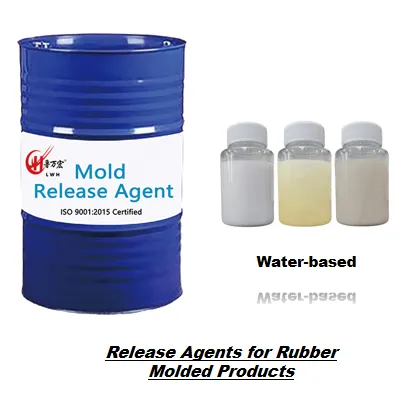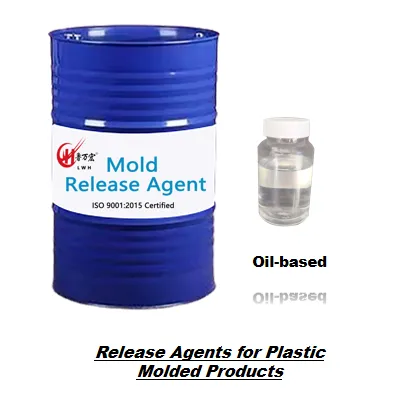Understanding the Power of Oil Based Release Agents in Modern Construction
The construction industry constantly seeks innovative solutions to enhance efficiency and quality in concrete work. Oil based release agents have emerged as a vital component in achieving superior results during concrete formwork removal. These specialized compounds create a barrier between the concrete and the form surface, facilitating clean and effortless separation while maintaining the desired finish quality.
Modern construction projects demand precision and reliability in every aspect, particularly when it comes to concrete casting and demolding. Oil based release agents have revolutionized this process by providing consistent performance and exceptional release properties that benefit both contractors and project outcomes.
The Science Behind Oil Based Release Agents
Chemical Composition and Properties
Oil based release agents typically consist of carefully formulated blends of mineral oils, petroleum derivatives, and specialized additives. These components work synergistically to create a stable, effective barrier between concrete and formwork surfaces. The base oils provide excellent coverage and adherence to form surfaces, while additives enhance performance characteristics such as viscosity, weather resistance, and release properties.
The molecular structure of oil based release agents allows them to form a continuous film that prevents concrete from bonding to the form surface. This scientific approach ensures reliable performance across various environmental conditions and concrete mix designs.
Interaction with Different Form Materials
One of the key advantages of oil based release agents is their versatility in working with various form materials. Whether dealing with steel, wood, plastic, or composite forms, these agents create an effective barrier while protecting the form surface. The oil-based formula penetrates and conditions wooden forms, preventing moisture absorption and extending form life.
For metal forms, the release agent provides rust protection while ensuring clean releases. This dual benefit makes oil based release agents particularly valuable for construction projects utilizing multiple form types.

Application Techniques and Best Practices
Proper Application Methods
Success with oil based release agents begins with proper application techniques. The agent should be applied in a thin, uniform coat using appropriate equipment such as sprayers, rollers, or brushes. Over-application must be avoided as it can lead to surface defects in the finished concrete and unnecessary waste of material.
Professional applicators recommend maintaining consistent coverage patterns and paying special attention to corners, edges, and detailed form surfaces. This methodical approach ensures optimal performance and prevents common issues such as concrete buildup or sticking.
Environmental Considerations
While applying oil based release agents, contractors must consider environmental factors that can impact performance. Temperature, humidity, and exposure to elements can affect the agent's behavior. Application during appropriate weather conditions and protecting treated forms from rain or excessive heat helps maintain effectiveness.
Modern formulations often include eco-friendly components that minimize environmental impact while maintaining superior performance. This evolution in product development addresses growing environmental concerns while meeting construction requirements.
Benefits and Advantages in Construction
Enhanced Surface Quality
Oil based release agents significantly contribute to achieving high-quality concrete surfaces. By preventing concrete adhesion and reducing air voids, these agents help create smooth, uniform finishes that meet architectural specifications. The consistent barrier they form helps eliminate surface defects and reduces the need for costly repairs or touch-ups.
The superior surface quality achieved through proper use of oil based release agents directly impacts project aesthetics and client satisfaction. This benefit is particularly valuable in architectural concrete applications where surface appearance is crucial.
Operational Efficiency
The use of oil based release agents streamlines construction operations by reducing form cleaning time and minimizing maintenance requirements. Forms can be stripped more quickly and easily, improving project efficiency and reducing labor costs. The protective properties of these agents also extend form life, providing significant cost savings over time.
Construction teams appreciate the predictable performance and reliability that quality oil based release agents provide. This consistency helps in planning work schedules and maintaining project timelines effectively.
Maintenance and Storage Considerations
Proper Storage Practices
Maintaining the effectiveness of oil based release agents requires proper storage practices. These products should be stored in sealed containers in cool, dry locations away from direct sunlight. Temperature extremes can affect product stability and performance, making proper storage essential for maintaining product quality.
Regular inventory rotation and careful handling prevent contamination and ensure consistent performance. Proper labeling and organization of storage areas help maintain product integrity and comply with safety regulations.
Equipment Care
Application equipment requires regular maintenance to ensure optimal performance of oil based release agents. Sprayers, hoses, and nozzles should be cleaned thoroughly after each use to prevent clogging and ensure even application. Proper equipment care extends service life and maintains application quality.
Establishing routine maintenance schedules and training staff in proper equipment care procedures helps maintain consistent application quality and prevents unnecessary downtime.
Frequently Asked Questions
How long before concrete placement should oil based release agent be applied?
Oil based release agents should typically be applied shortly before concrete placement, ideally within 24 hours. However, protected forms can be treated up to several days in advance if necessary. The key is ensuring the coating remains intact and uncontaminated until concrete placement.
Can oil based release agents be used in cold weather conditions?
Yes, oil based release agents can be used in cold weather, though application techniques may need adjustment. Some formulations are specifically designed for cold weather performance. It's important to maintain proper storage temperatures and allow the product to reach workable consistency before application.
What coverage rate should be expected from oil based release agents?
Coverage rates typically range from 600 to 1000 square feet per gallon, depending on the form surface and application method. Smooth, non-porous surfaces generally require less material than rough or porous surfaces. Always follow manufacturer recommendations for optimal results.
How do oil based release agents affect concrete curing?
When properly applied, oil based release agents do not interfere with concrete curing. The thin film created allows proper moisture retention while preventing bonding to the form surface. This balance helps achieve optimal concrete strength and surface quality.

